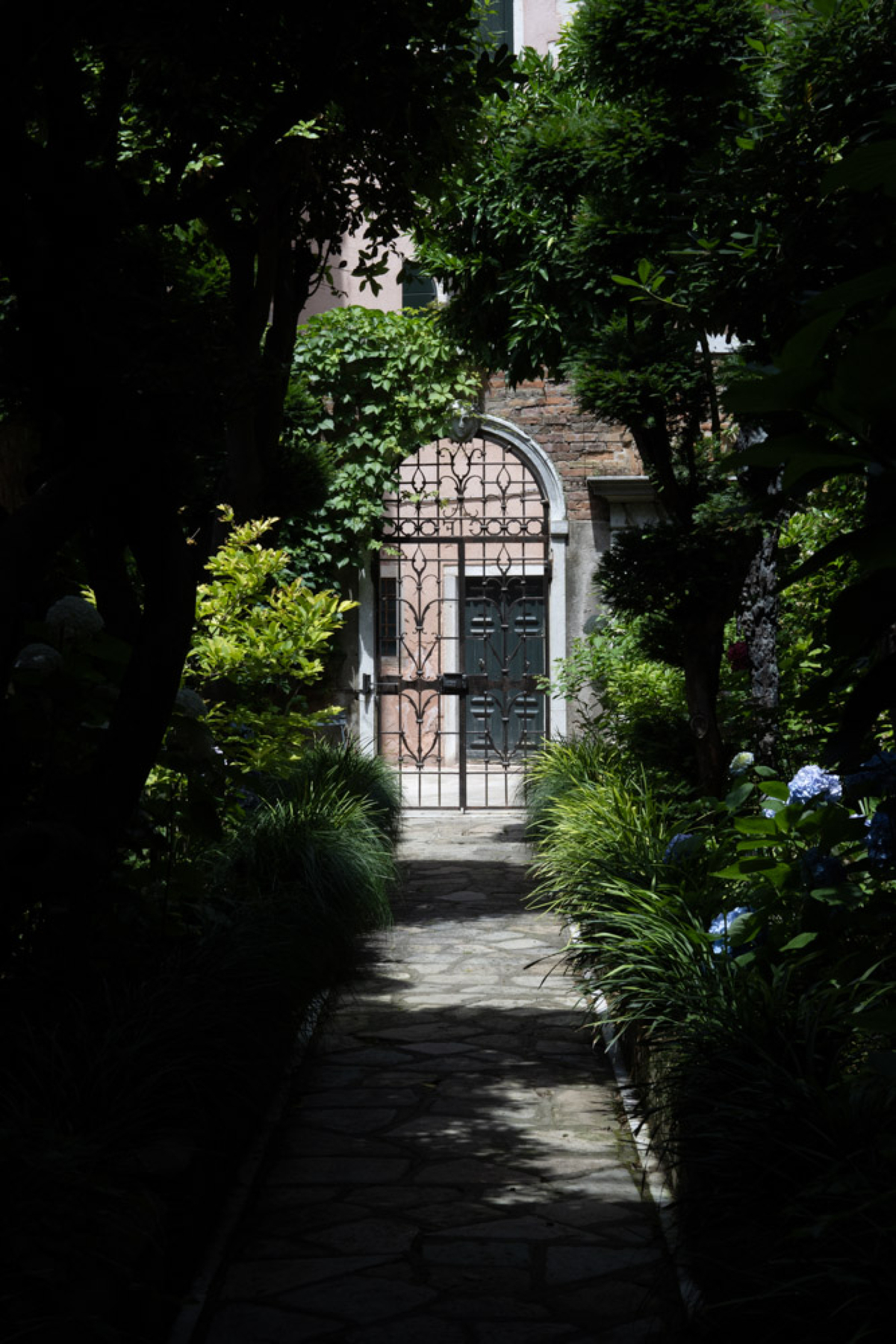“Venice is a woman,” Diane von Furstenberg has written. “The gardens of Venice are like precious emeralds set in the mounting of an elaborate golden jewel, small green spots scattered throughout a complex urban fabric, often inaccessible or unknown.”
These green oases, which float above the city’s swampy lagoon, are everywhere in Venice. Gardens hug the sprawling Fondazione Giorgio Cini. They highlight the outdoor sculptures at the Peggy Guggenheim Collection. Many are centuries old, small, and concealed behind tall fences and brick walls.
It was in 1500, when he created his renowned bird’s-eye drawing of Venice, that the artist Jacopo de’ Barbari first planned to construct palazzo gardens. In his study, he drew orderly palazzi on the south side of the island of Giudecca. Each garden followed the axis of the main entrance, and was surrounded by high, crenellated walls. Within the garden, residents would cultivate speziali, or pharmacies that grew medicinal plants and botanicals sourced in Africa and the Middle East. Scholars would meet among the fronds for experiments, extracting curative juices from stems.
As the city’s merchants prospered, Venetian ships increased the number of rare plant specimens they imported. By the mid–16th century, enthusiasts visited Palazzo Corner della Regina, in Rio della Croce, to examine botanical rarities from Greece and Cyprus. Professors from the University of Padua crossed the lagoon to study the specimens.
At the end of the 17th century, when the Venetian Republic’s influence began to wane, the city’s artists were still basking in glory, traveling to the courts of Europe. In 1740, Cecilia Grimani Calergi Sagredo commissioned the renowned architect Giorgio Massari to create a casino in Cannaregio, complete with imposing gardens that overlooked the lagoon. Throughout the 18th century, sculptures in Vicenza limestone appeared in greenery across town.
After the tumult of Napoleon and the Austrian occupation, from 1797 to 1805, the secret gardens of Venetian palazzi were slowly abandoned. The influence of La Serenissima—“the most serene,” as Venice was called—ended, and the vegetation withered along with the wealth of the patriarchate. Artworks were dispersed, and some of the palazzi would be empty for decades.
New gardens began to appear in the 19th century, when vacant buildings along the waterfront were demolished. Many of these—the gardens of the Palazzo Balbi Valier, in San Vio, for instance, and those of the Palazzo Malipiero, in San Samuele—sprang up on the Grand Canal.
In The Gardens of Venice, a new book with photographs by Marco Valmarana and text by Toto Bergamo Rossi and Marco Bay, the city’s green spaces have been photographed during all seasons. As you flip through these serene pages, a quote by Sigmund Freud may come to mind: “Flowers are restful to look at. They have neither emotions nor conflicts.”
—Elena Clavarino
Elena Clavarino is a Senior Editor at AIR MAIL










